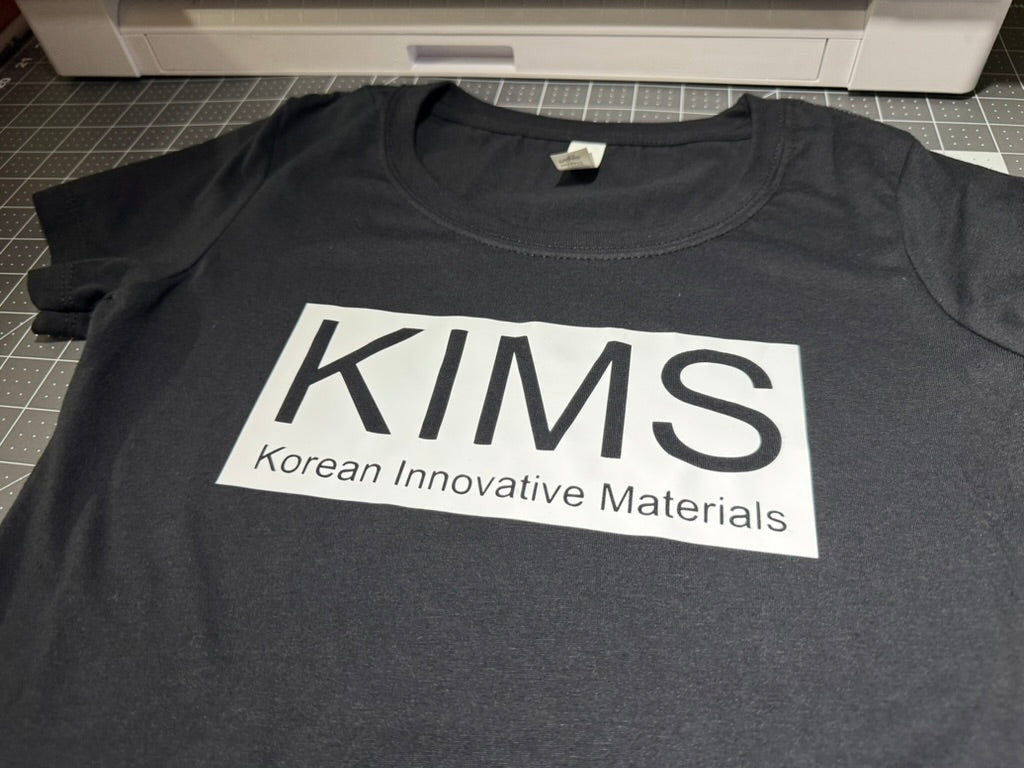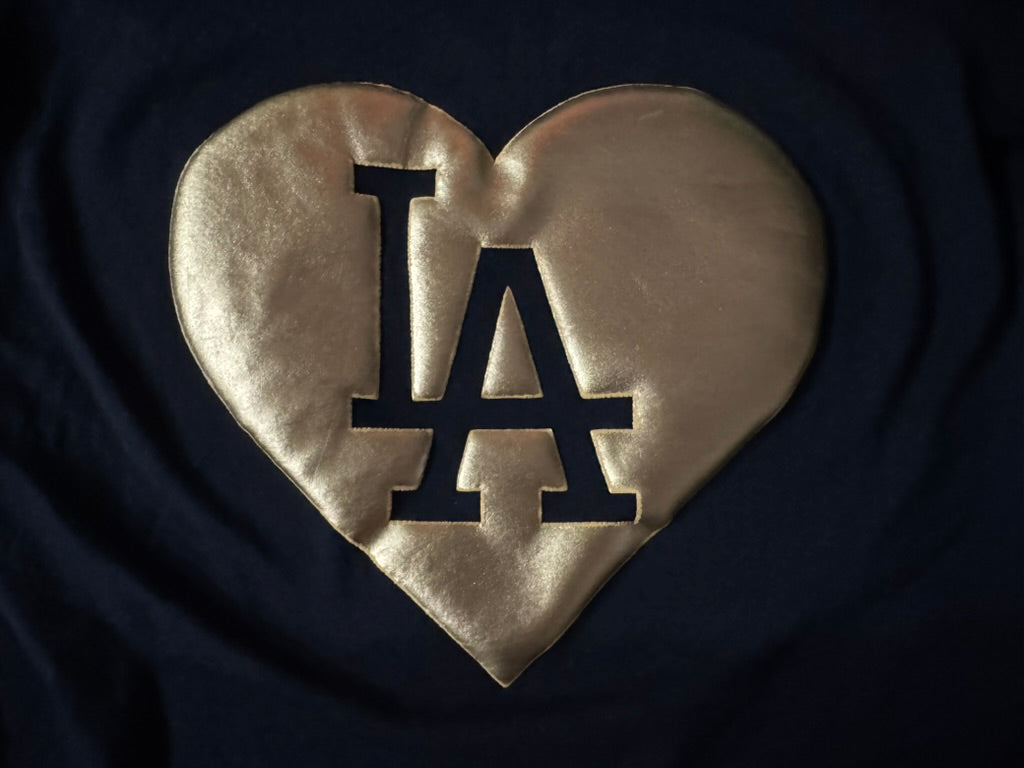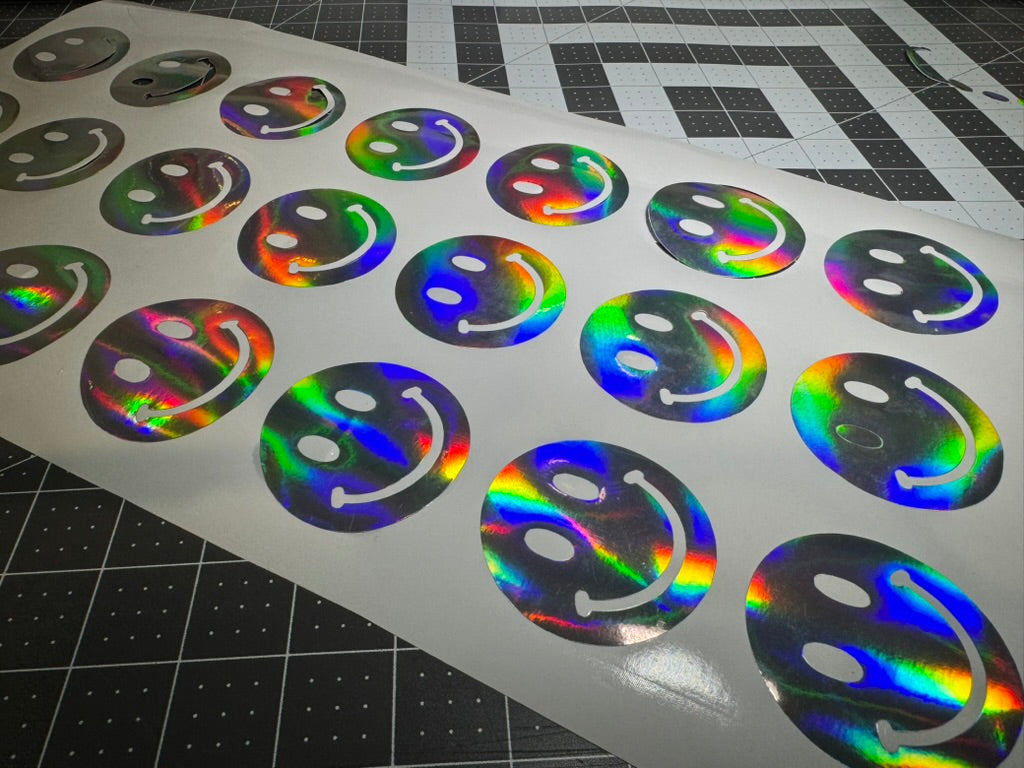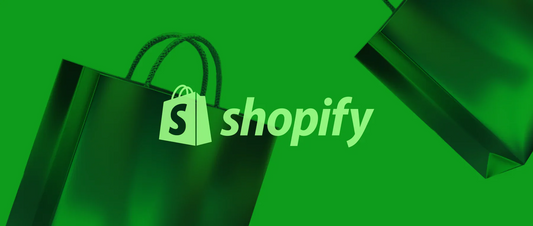Introduction
Vinyl materials are widely used in crafting, custom apparel, and product decoration. Two common types are heat transfer vinyl (HTV) and adhesive vinyl. While both are made for personalization, they are used in different ways and on different surfaces.
Understanding the difference between these materials helps when preparing designs, selecting equipment, or planning production steps. Each vinyl type has its own application method, material structure, and surface compatibility.
This guide provides a clear comparison between HTV and adhesive vinyl, starting with the basics of what each one is and how they are commonly used.
What Is HTV Vs Iron On?
Heat Transfer Vinyl (HTV) is a type of vinyl designed to be applied to fabric using heat and pressure. It's also called "iron-on vinyl" because a household iron or heat press is typically used to apply it.
Adhesive vinyl, by contrast, has a sticky backing and is applied by pressing it onto hard surfaces like glass, plastic, or wood without heat. The key difference is simple: HTV is for soft surfaces; adhesive vinyl is for hard surfaces.
When you look at these materials before use, HTV has a clear plastic carrier sheet on top, while adhesive vinyl has a paper backing. This physical difference helps identify which type you're working with.
Is Heat Transfer Vinyl The Same As Iron On Vinyl?
Yes, heat transfer vinyl (HTV) and iron-on vinyl refer to the same material. Both terms describe vinyl that uses heat and pressure to transfer a design onto fabric or other heat-safe surfaces.
The difference in names comes from how companies label their products:
-
"HTV" is common in professional and commercial settings
-
"Iron-on vinyl" is more familiar to hobbyists and home crafters
There's no technical difference between products labeled either way. However, brands may offer variations in thickness, carrier sheet type, or temperature requirements. These subtle differences follow manufacturer guidelines but don't indicate completely different product categories.
What's Permanent Vinyl And Where Is It Used?
Permanent vinyl is a type of adhesive vinyl with a strong pressure-sensitive backing designed to form a lasting bond with smooth, hard surfaces. Unlike removable vinyl, permanent vinyl resists water, fading, and outdoor elements, making it suitable for long-term applications.
Common uses for permanent vinyl include:
-
Outdoor signage
-
Vehicle decals
-
Water bottles and tumblers
-
Dishwasher-safe applications
-
Storefront displays
-
Mailbox or window graphics
Permanent vinyl typically comes with either a glossy or matte finish and is available in various colors and specialty finishes like metallic or holographic. The strong adhesive makes it ideal for projects that will be handled frequently or exposed to weather conditions.
Is Permanent Vinyl Iron On Or Something Else?
Permanent vinyl is not iron-on vinyl. It's a type of adhesive vinyl that uses a pressure-sensitive backing to stick to surfaces without heat. The backing of permanent vinyl is usually a paper liner that protects the adhesive until application.
This differs from heat transfer vinyl (HTV), which has a clear plastic carrier sheet and requires heat to bond to fabric. Both types can be cut with the same machines (like Cricut or Silhouette), but their application methods and uses are different:
-
HTV: For fabric and heat-safe materials; requires heat
-
Permanent vinyl: For hard, non-porous surfaces; uses pressure-sensitive adhesive
This distinction is important when planning your project and preparing your materials.
Key Differences Between HTV And Adhesive Vinyl
1. Carrier Sheet Vs Adhesive Backing
HTV has a clear plastic carrier sheet on top that holds the design in place during heating. The vinyl is cut from the back side, so designs must be mirrored before cutting.
Adhesive vinyl has a paper liner on the back that protects the sticky adhesive. The vinyl is cut from the top side, so designs aren't mirrored. After cutting, transfer tape is used to move the design to its final surface.
Visual identification: HTV is typically shiny on the carrier side and dull on the back. Adhesive vinyl feels sticky when the paper liner is removed.
2. Heat Press Vs Transfer Tape
HTV requires heat application:
-
Uses a heat press or household iron
-
Typically applied at 305°F-320°F
-
Requires firm pressure for 10-15 seconds
-
Heat activates the adhesive that bonds to fabric fibers
Adhesive vinyl uses transfer tape:
-
No heat required
-
Transfer tape lifts the cut design from its backing
-
Pressure is applied with a scraper tool
-
The adhesive sticks to clean, dry surfaces on contact
3. Common Surfaces And Durability
|
Vinyl Type |
Best Surfaces |
Poor Surfaces |
Durability |
Cleaning |
|---|---|---|---|---|
|
HTV |
Cotton, polyester, canvas |
Glass, plastic, metal |
50+ washes when applied correctly |
Cold water wash, air dry |
|
Adhesive Vinyl |
Glass, plastic, metal, ceramic |
Fabric, textured surfaces |
Outdoor-rated; water/UV resistant |
Gentle wiping with mild cleaner |
How To Cut And Apply Each Type
1. Cutting HTV Correctly
HTV is cut with the shiny carrier sheet facing down on your cutting mat. This orientation is crucial because the design must be mirrored (flipped horizontally) before cutting.
For cutting machines, use these general settings:
-
Cricut: Select "Iron-On" material setting
-
Silhouette: Blade depth 2-3, speed around 5, force 6-8
Always perform a test cut first to confirm your settings are correct. Common mistakes include forgetting to mirror the design or placing the vinyl with the wrong side up.
2. Applying HTV With Heat
The heat application process bonds HTV to fabric:
-
Place fabric on a flat, heat-safe surface
-
Position the HTV design with carrier sheet facing up
-
Set heat press or iron to the recommended temperature (usually 305°F-320°F)
-
Apply firm pressure for 10-15 seconds
-
Allow to cool slightly, then remove the carrier sheet
For best results, pre-press your fabric for a few seconds to remove moisture and wrinkles before applying the vinyl.
3. Cutting Adhesive Vinyl Properly
Adhesive vinyl is cut with the colored vinyl side facing up. The paper backing stays on the bottom during cutting. Unlike HTV, designs are not mirrored.
Use these general settings:
-
Cricut: Select "Vinyl" material setting
-
Silhouette: Blade depth 1-2, slower speeds, lower force
The goal is to cut through the vinyl layer only, not the backing. A proper "kiss cut" makes weeding easier and ensures the design transfers correctly.
4. Transferring Adhesive Vinyl
After cutting and weeding adhesive vinyl, transfer tape helps move the design:
-
Remove unwanted vinyl, leaving only your design
-
Apply transfer tape over the design, smoothing from center outward
-
Burnish firmly with a scraper tool
-
Peel away the vinyl's paper backing
-
Position on the clean application surface
-
Burnish again to ensure adhesion
-
Slowly peel away the transfer tape at a 45° angle
How To Choose The Right Vinyl For Your Project
1. Fabric Vs Hard Surfaces
The surface material is the primary factor in choosing between HTV and adhesive vinyl:
For fabric items:
-
T-shirts, hoodies, tote bags → Use HTV
-
Canvas shoes, hats, aprons → Use HTV
For hard surfaces:
-
Mugs, tumblers, glass → Use adhesive vinyl
-
Wall decals, car decals → Use adhesive vinyl
HTV works well on fabric because it bonds with the fibers when heat is applied. Adhesive vinyl works best on smooth, non-porous surfaces where its pressure-sensitive backing can form a strong bond.
2. Indoor Vs Outdoor Conditions
Environmental exposure affects vinyl durability:
Durability factors:
-
UV resistance: Important for items in direct sunlight
-
Water exposure: Critical for dishwasher items or outdoor use
-
Temperature changes: Affects adhesion on exterior surfaces
-
Wear resistance: Determines lifespan in high-contact areas
For outdoor projects, permanent adhesive vinyl with UV resistance works best. For washable garments, quality HTV properly applied can withstand numerous wash cycles.
3. Special Finishes And Effects
Both vinyl types come in specialty finishes that add visual interest:
-
Glitter and sparkle options
-
Holographic and color-shifting
-
Metallic and foil finishes
-
Textured options
-
Glow-in-the-dark and reflective
These specialty finishes can create eye-catching effects for decorative projects, safety markings, or premium products.
How To Avoid Peeling And Cracking
1. Proper Press Temperature And Pressure
Incorrect temperature or pressure during heat application often causes HTV failures:
Temperature issues:
-
Too hot: Causes bubbling, shrinking, or discoloration
-
Too cool: Results in poor adhesion and lifting edges
Pressure problems:
-
Uneven pressure: Creates areas that don't bond properly
-
Insufficient pressure: Prevents complete adhesion to fabric
Different fabrics require different settings. Cotton often needs higher temperatures than polyester. Always follow the vinyl manufacturer's guidelines for specific materials.
2. Correct Weeding Techniques
Weeding—removing excess vinyl from a cut design—requires care and proper tools:
Weeding tips:
-
Use fine-tip tools for small details
-
Work in a well-lit area or use a light box
-
Weed inside-out (small internal pieces first)
-
Use consistent, gentle pulling angles
Proper weeding preserves the integrity of your design and prevents accidental damage to important elements.
3. Wash And Care Guidelines
How you care for completed vinyl projects affects their lifespan:
For HTV on fabric:
-
Wash inside-out in cold water
-
Avoid harsh detergents
-
Air dry or use low heat
-
Wait 24 hours after application before washing
For adhesive vinyl on hard surfaces:
-
Clean with non-abrasive cloths
-
Use mild cleaners
-
Avoid scrubbing or pressure washing
Future Trends In Vinyl Materials For Crafting
The vinyl industry continues to innovate with new materials and technologies:
Eco-friendly options now include non-PVC alternatives and water-based adhesives that reduce environmental impact while maintaining performance.
Application innovations feature low-temperature HTV for heat-sensitive fabrics and repositionable adhesive vinyl that allows adjustment before final placement.
Enhanced durability comes from improved polyurethane layers in HTV that withstand more wash cycles and UV-resistant coatings in adhesive vinyl for longer outdoor life.
New specialty finishes include temperature-sensitive color-changing vinyl, improved reflective materials, and dimensional effects that add texture and visual interest.
These advancements make vinyl crafting more accessible, versatile, and durable for both hobbyists and commercial users.
Empower Your Craft With KIMS Direct
KIMS Direct offers heat transfer vinyl and adhesive vinyl designed for consistent application and long-term durability. Our products undergo testing for wash resistance, color retention, and cutting precision to ensure reliable performance.
Our vinyl formulations handle detailed designs without tearing during weeding or lifting during transfer, supporting efficient production and minimizing rework. We offer standard and specialty finishes, including reflective, color-shifting, and textured options rated for extended use.
Explore our full range of vinyl materials at https://kimsdirect.com/collections/all.
Frequently Asked Questions About Vinyl Selection
Can you layer HTV over adhesive vinyl?
HTV cannot be layered over adhesive vinyl because the heat required for application may damage the adhesive layer or cause it to peel, making these two vinyl types incompatible for layering.
Which vinyl is best for commercial orders?
Commercial orders typically benefit from high-durability vinyl with consistent cutting performance and extended wash resistance, such as professional-grade HTV for apparel or premium permanent vinyl for signage.
Does the vinyl brand matter if I use a Cricut or Silhouette?
While most vinyl brands work with Cricut and Silhouette machines, quality differences can affect cutting precision, weeding ease, and final application results, especially with intricate designs.
What's the difference between iron on vinyl and heat transfer vinyl?
There is no difference between iron-on vinyl and heat transfer vinyl—they are two names for the same product, with "iron-on" being more common in hobby settings and "HTV" in professional contexts.
Is HTV or adhesive vinyl more durable for clothing?
HTV is more durable for clothing because it bonds with fabric fibers when heat is applied, whereas adhesive vinyl sits on the surface and isn't designed to withstand washing or fabric movement.







